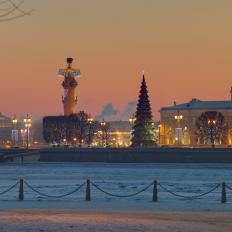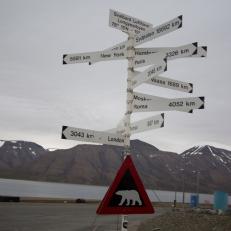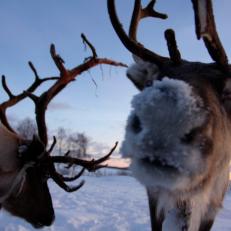6 Global Christmas Traditions
There are many, many ways to celebrate the holidays. Christmas is a special time of the year for many all over the world from Italy to Mexico. Here are six wonderful ways people celebrate Christmas.
Italy: Bagpipe-playing Shepherds
In southern Italy you’ll find locals playing none other than the bagpipes. Performing in duos and dressed in sheepskins and wool cloaks, the Zampognari bust out the songs in the middle of squares and piazzas. The tradition dates back to Roman times when shepherds would travel down from the mountains to perform for townsfolk in the market squares, hoping to earn some extra income. Other stories tell of shepherds who visited the Virgin Mary in Bethlehem, and after some time with baby Jesus, decided to play their bagpipes in celebration. The outfits are made from short breeches with leather legging, sheepskin vests with a woolen cloak, and peaked cap with neckerchief.
Philippines: Giant Lantern Festival
Known as the Ligligan Parul Sampernandu, the annual event is held on the Saturday before Christmas Eve in the city of San Fernando, also known as the Christmas capital of the Philippines. The competition is fierce as locals attempt to outdo each other in building the most elaborate, beautiful lantern. Initially, they were made from Japanese origami paper and lit by a candle, averaging just half a meter in size. Now, however, they reach almost six meters and are illuminated by electric bulbs that give off the illusion of a kaleidoscope of patterns.
Sweden: Gävle Goat
The giant straw goat first made its appearance in 1966, at the Slottstorget — Castle Square — in Gävle, Sweden. It’s erected every year by local community groups and is made in the image of a traditional Swedish Yule Goat. The initial idea came from an advertising consultant, and the design of the first goat was handed over to the chief of the town’s fire department at the time. The first goat was around 43 ft tall and 23 ft long. It’s also been burnt down most years since 1966, with the arson itself becoming a kind of tradition, despite a three month prison sentence as punishment.
Eastern Europe: The Legends of Spiderwebs
As Eastern European folklore goes, a widow who lived with her children in a cramped hut was too poor to decorate one of their pine trees for Christmas. As luck would have it, the hut’s spiders decided to decorate the bare tree and spun stunning webs across its branches. The tale may or may not be true, but the moral of the story is to be grateful. And to this day, Ukrainians honor the story by decorating their trees with spider webs.
Worldwide: Garbage Christmas
This list wouldn’t be complete without something bizarre. At the Rumpke Sanitary Landfill near Cincinnati, Ohio, a rather strange Christmas tradition is undertaken by the landfill’s employees. Every year, workers string a whopping 30,000 Christmas lights across the giant garbage mound, which stretches 234 acres and reaches 279ft into the sky. Not only that, but 25 ft-tall candy canes are erected too. Besides this massive display in Ohio, all over the world recycled materials are used to decorate for the holidays, like this massive tree in Brazil made from bottles and cans.
Mexico: Two Months of Celebrations
From December 3, which marks the start of the novenas to honor the Virgin of Guadalupe, until Candlemas on February 2, Mexico celebrates the Christmas season for almost two months. The Virgin of Guadalupe is celebrated by nine days of novenas — a Christian tradition of devotional praying — culminating in the feast day of the Virgin. Processions, masses, dancing, and singing are all part of the festivities, with some pilgrimaging to her shrine on Tepeyac hill in Mexico City. While in other areas, young boys dress up as Juan Diego, the man who the Virgin is said to have appeared to. December 16 to 24 is “posada” season, which sees children play the part of Mary and Joseph trying to find a place in Nazareth. Sticking to history, locals pretend to reject the pair twice before the third house takes them in.
On Christmas Eve, midnight mass is attended, followed by a late-night feast of bacalao, ham, turkey and mole. On Three Kings Day, January 6, rosca, a round fruit cake, is baked in the shape of a circle, a little baby Jesus figurine baked inside the middle. And on the final day of celebrations, Dia de la Candelaria, Mexicans bring baby Jesus from their nativity scenes to church to receive a special blessing, sharing tamales and atole afterwards.










![108312270 Salzburg's famous old town and iconic Hohensalzburg fortress decorated for the Christmas holidays.
Please see my related collections...
[url=search/lightbox/7431206][img]http://i161.photobucket.com/albums/t218/dave9296/Lightbox_Vetta.jpg[/img][/url]
[url=search/lightbox/3521671][img]http://i161.photobucket.com/albums/t218/dave9296/Lightbox_Salzburg-V2.jpg[/img][/url]
[url=/search/lightbox/4780530][img]http://i161.photobucket.com/albums/t218/dave9296/Lightbox_santa_V2.jpg[/img][/url]
[url=search/lightbox/3521651][img]http://i161.photobucket.com/albums/t218/dave9296/Lightbox_alp_winter-V2.jpg[/img][/url]](http://discovery.sndimg.com/content/dam/images/discovery/fullset/2020/12/22/GettyImages-108312270.jpg.rend.hgtvcom.231.231.suffix/1608653200154.jpeg)











